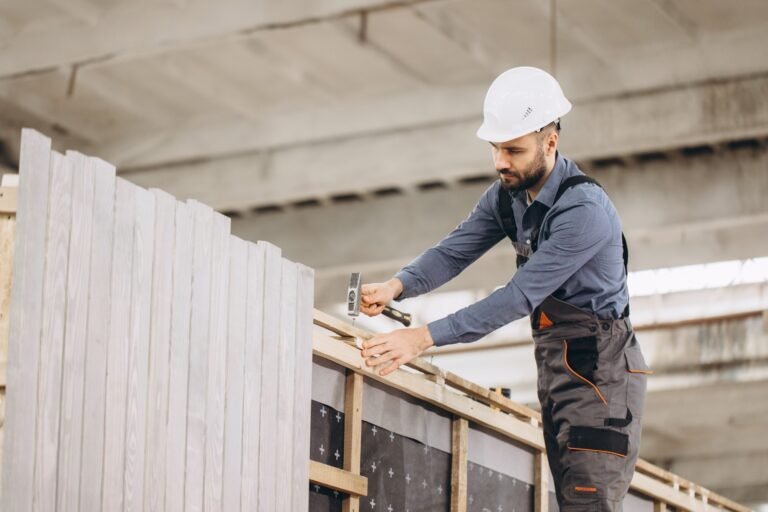Researchers have launched Rohbau3D, the primary complete 3D level cloud dataset that precisely captures indoor building environments throughout a number of real-world websites.
Research: Rohbau3D: A Shell Development Website 3D Level Cloud Dataset. Picture Credit score: Anatoliy Cherkas/Shutterstock.com
Printed in Scientific Knowledge, Rohbau3D options 504 high-resolution LiDAR scans collected from 14 high-rise building websites in numerous phases of shell building or renovation. The dataset presents an in depth, life like basis for advancing analysis in construction automation, digital modeling, and indoor scene understanding.
Background
In building, detailed 3D fashions are sometimes developed just for massive, high-budget tasks the place Constructing Info Modeling (BIM) justifies the associated fee. The overwhelming majority of small and medium-sized tasks, which make up a lot of the constructed setting, nonetheless depend on conventional 2D plans.
Renovation and repurposing tasks face a fair larger problem: they typically start with no digital report of the present construction. To enhance effectivity and accuracy in these contexts, the business wants dependable geometric knowledge—and the instruments to course of it successfully.
Whereas deep studying fashions at the moment are able to dealing with massive 3D datasets, most present assets give attention to autonomous driving, infrastructure, or mixed-use interiors. Datasets particular to lively building environments are nonetheless uncommon. Rohbau3D fills this hole with high-fidelity 3D level clouds from actual indoor building situations.
How the Knowledge Was Collected
The scans have been collected over a one-year interval in and round Munich, Germany, with 4 companions concerned in web site choice: a big building agency, two smaller firms, and the Munich State Constructing Authority. This collaboration helped make sure the dataset displays a sensible and assorted cross-section of the business.
Knowledge was captured utilizing a terrestrial laser scanner, able to recording as much as 1 million factors per second, and paired with excessive dynamic vary (HDR) spherical imagery to generate colorized level clouds. Mounted on a tripod for stability, the scanner was positioned by a educated civil engineer, who tailored placement to every web site’s format in an effort to reduce the variety of scans whereas maximizing protection.
Preprocessing was saved minimal to protect the uncooked knowledge’s integrity. A Euclidean distance filter eliminated factors greater than 25 meters from the scan origin to scale back noise brought on by reflective surfaces and sensor anomalies. The positional accuracy of the scans was documented at 2 mm at 10 meters, 3 mm at 25 meters, and included an extra uncertainty of 0.1 mm per meter past that vary.
What the Dataset Comprises
Rohbau3D is a medium-scale assortment of static indoor scans gathered from a broad spectrum of real-world building websites. Every scan contains detailed 3D spatial coordinates, RGB shade and floor reflectance knowledge, reconstructed floor regular vectors, panoramic 2D photos, and accompanying metadata. The dataset additionally comes with primary instruments to assist handle and interpret the information quantity.
The 504 scans cowl 14 distinct constructing environments, together with six mid-rise residential buildings—4 of them newly constructed, and two present process shell-preserving renovations. Past residential websites, the dataset options three large-scale faculty buildings with subdivided school rooms, a multi-story workplace constructing, an underground parking construction, and a vaulted brick cellar in a historic constructing.
To make sure readability and expandability, the dataset was organized hierarchically. Every building web site was saved in a folder labeled with the prefix site_, containing nested folders for every particular person scan (scan_). Inside every scan, level cloud coordinates, annotation knowledge (like shade or floor normals), and panoramic photos are saved as separate recordsdata.
Validating the Knowledge
The researchers carried out an intensive sanity examine to confirm the completeness and consistency of every scene. Whereas there have been no ground-truth floor normals out there for quantitative comparability, the expected normals have been assessed qualitatively for visible coherence, geometric accuracy, and structural consistency.
Some minor inconsistencies have been noticed in localized areas, however total, the dataset demonstrates robust integrity and is appropriate for a variety of functions, together with indoor scene geometry evaluation, semantic segmentation, and floor reconstruction. Its modular design additionally makes it straightforward to increase or adapt for particular analysis wants.
Conclusion
Rohbau3D isn’t only a technical useful resource—it’s a mirrored image of what’s actually occurring on building websites right this moment.
By capturing the complexity and number of indoor areas throughout the shell section, it provides researchers and builders the type of real-world knowledge they’ve been lacking. Whether or not you are engaged on scene reconstruction, automation instruments, or smarter renovation workflows, this dataset presents a stable, life like basis to construct on. And because the business continues transferring towards extra data-driven approaches, assets like Rohbau3D might be key to bridging the hole between design and on-site actuality.
Journal Reference
Rauch, L., & Braml, T. (2025). Rohbau3D: A Shell Development Website 3D Level Cloud Dataset. Scientific Knowledge, 12(1). DOI: 10.1038/s41597-025-05827-7. https://www.nature.com/articles/s41597-025-05827-7

